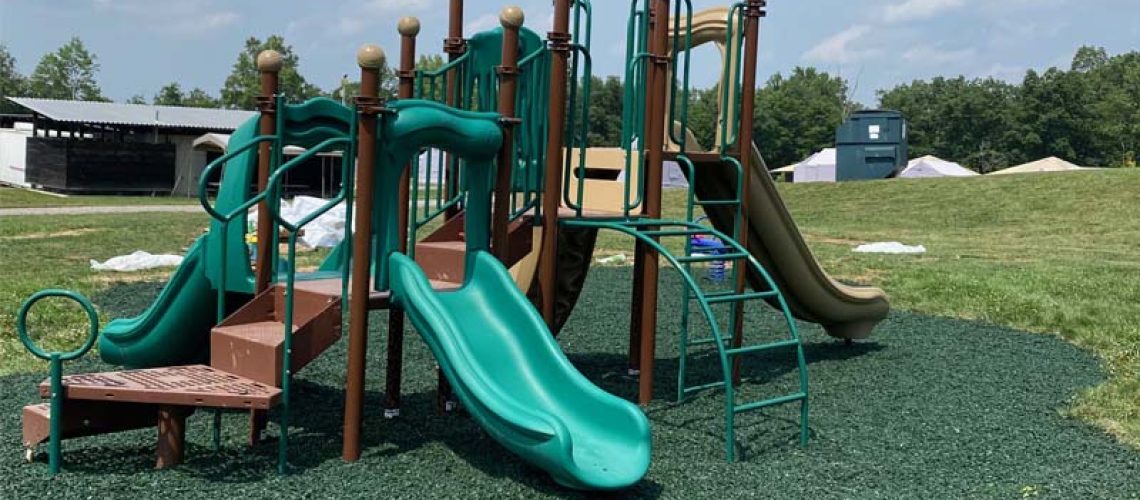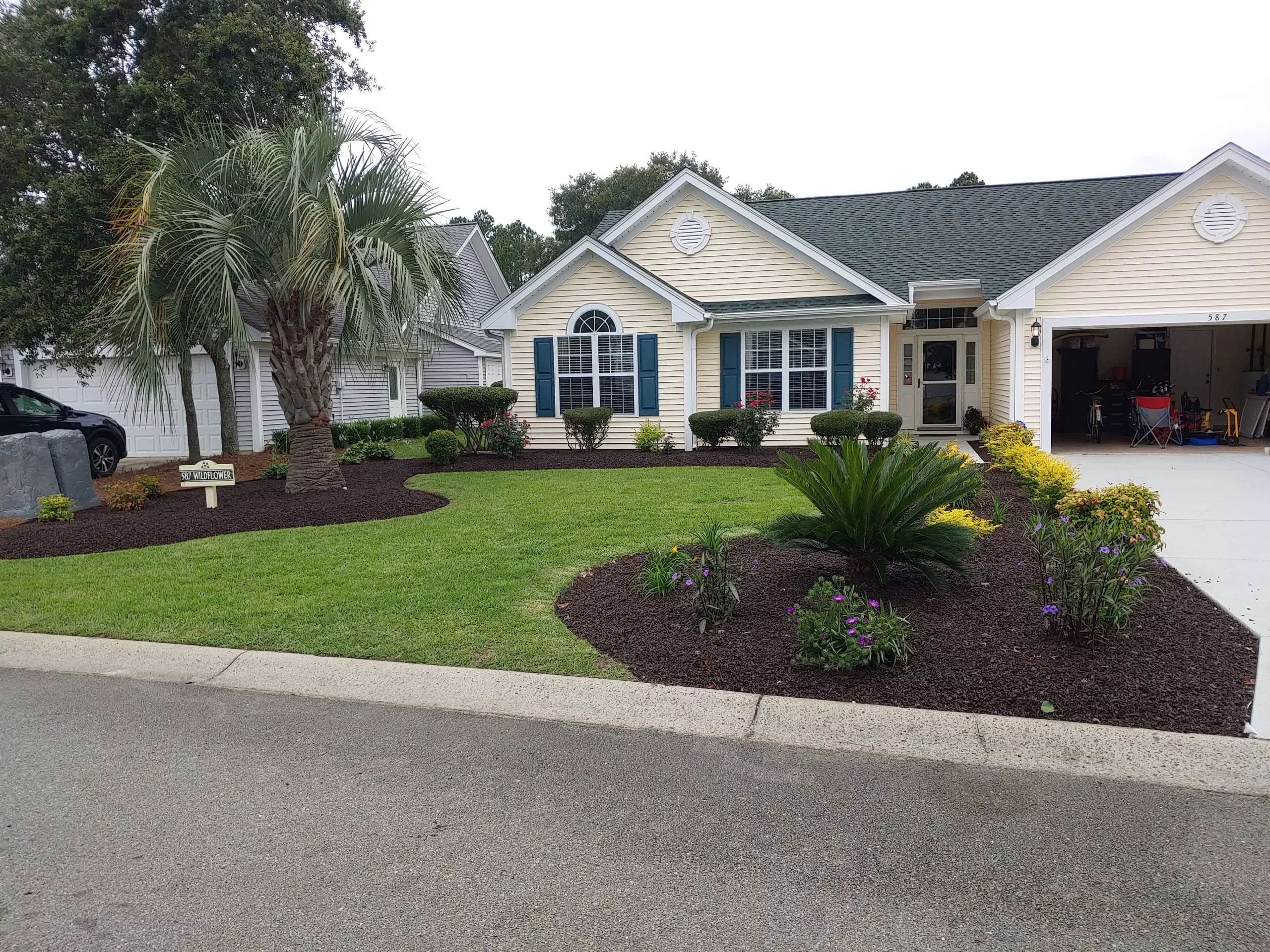Let’s dive into an important topic that affects both our children’s safety and our planet’s well-being: playground surfaces. When it comes to creating safe and eco-friendly play areas, two popular options stand out: rubber mulch and rubber playground tiles. We will be going over the pros and cons and weighing their benefits and environmental impacts.
Rubber Mulch:
RMP’s Rubber mulch, made from recycled tires, offers a soft and shock-absorbent surface for playgrounds. It provides a cushioned landing, reducing the risk of injuries from falls. The use of recycled materials is a commendable aspect, as it diverts rubber from landfills and promotes sustainability. Additionally, rubber mulch requires minimal maintenance and can withstand harsh weather conditions, making it a durable choice.
However, it’s important to consider the drawbacks. Rubber mulch can become a warm under excessive heat, potentially causing discomfort for children. Under these conditions its recommended children wear shoes while playing. Its loose nature also makes it prone to displacement, which may require occasional replenishment.
Rubber Playground Tiles:
Playground tiles, also manufactured from recycled rubber, offer a solid and stable surface for play areas. They come in various thicknesses and are designed to provide shock absorption and slip resistance. The interlocking tiles ensure stability and prevent displacement. One significant advantage is their ability to maintain a cooler surface temperature compared to rubber mulch, making them more comfortable for children during excessive heat.
In terms of maintenance, rubber playground tiles require minimal effort. They are easy to clean, resistant to mold and mildew, and offer long-lasting durability. Moreover, like rubber mulch, they contribute to waste reduction by repurposing used tires.
However, it’s essential to consider potential downsides. The installation process of rubber playground tiles can be more involved and costly compared to rubber mulch. Additionally, due to their solid structure, they may not provide as soft of a landing as rubber mulch. Although they still offer significant shock absorption, extra care should be taken to ensure a safe play environment.
Environmental Considerations:
When it comes to sustainability, both rubber mulch and rubber playground tiles have their environmental pros and cons. On the positive side, both options repurpose used tires that would otherwise end up in landfills or create environmental hazards. By recycling and reusing rubber, we reduce waste and conserve valuable resources.
However, it’s important to acknowledge that the production of rubber products, including both mulch and tiles, involves energy-intensive processes. Additionally, there are concerns regarding the potential leaching of chemicals from these surfaces into the soil. While extensive research suggests minimal risk, it’s crucial to prioritize the use of high-quality, non-toxic materials and follow proper installation and maintenance procedures to minimize any potential environmental impact.
Factors to Consider:
When choosing between rubber mulch and rubber playground tiles, several factors come into play. Consider the following aspects:
1 – Safety:
Both surfaces offer excellent shock absorption, reducing the risk of injuries from falls. However, rubber mulch’s loose nature may result in unevenness, while rubber playground tiles provide a more consistent and stable surface.
2 – Comfort:
Rubber playground tiles tend to offer a cooler and more comfortable surface, especially during hot weather. On the other hand, rubber mulch can be less forgiving under direct sunlight.
3 – Maintenance:
Rubber mulch may require occasional replenishment and redistribution to maintain an even surface. Rubber playground tiles, on the other hand, require minimal maintenance and can be easily cleaned.
4 – Installation:
Rubber mulch can be spread and leveled, requiring less effort during installation. Rubber playground tiles may involve a more intricate process of interlocking and securing the tiles.
5 – Budget:
Rubber mulch generally tends to be more cost-effective initially. However, over time, the need for replenishment and maintenance may incur additional expenses. Rubber playground tiles have a higher upfront cost but require less ongoing maintenance.
6 – Environmental Impact:
Both options contribute to waste reduction by repurposing used tires. However, the production processes and potential leaching of chemicals raise environmental concerns. Opting for high-quality, non-toxic materials, such as those found in RMP USA’s rubber mulch, and following best practices during installation and maintenance can mitigate these concerns.
As we weigh the pros and cons of rubber mulch and rubber playground tiles, the decision ultimately depends on your specific needs and priorities. Both surfaces offer excellent safety features and contribute to waste reduction through tire recycling.
When considering rubber mulch, it’s crucial to address concerns regarding potential displacement, heat retention, and the production process. For those leaning towards rubber playground tiles, factors such as installation complexity and higher upfront costs should be taken into account.
Remember, no matter which option you choose, maintaining a safe and inviting playground environment for our children should always be a top priority. Both solutions create safe play areas while minimizing our environmental impact.




